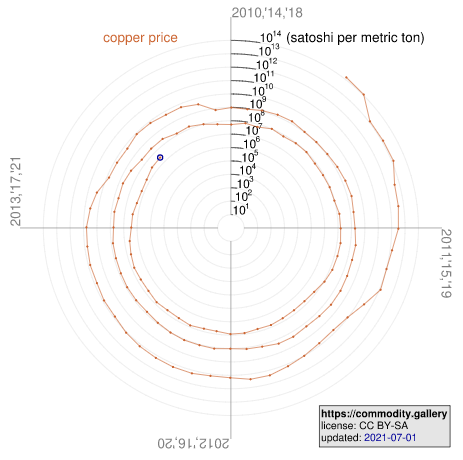
One of the most interesting ways to visualize bitcoin's adoption is via a polar coordinates chart, such as @clockwork_parts has done.
The logarithmic radius represents bitcoin's price, while the angle represents time.
The logarithmic radius represents bitcoin's price, while the angle represents time.

I think it was @PrestonPysh who noted that, basically what bitcoin bulls wouldn't want to see, is for the lines on that graph touch, meaning a four-year cycle failed to continue growth adoption. Otherwise, the monetization remains on track.
Seems logical.
Seems logical.
You can also denominate any commodity in sats (fractional bitcoin), and watch the inward spiral instead. Meaning the commodity gets consistently less expensive in terms of bitcoin.
clockworkpartners.com/commodity/
clockworkpartners.com/commodity/

They also map it out in terms of cumulative energy input and portfolio allocation. Bitcoin's 4-year supply halving cycle matches particularly well onto a polar coordinate system, for any particular variable.
Basically it's a really thoughtful way to visualize the data. Kudos.
Basically it's a really thoughtful way to visualize the data. Kudos.
• • •
Missing some Tweet in this thread? You can try to
force a refresh








